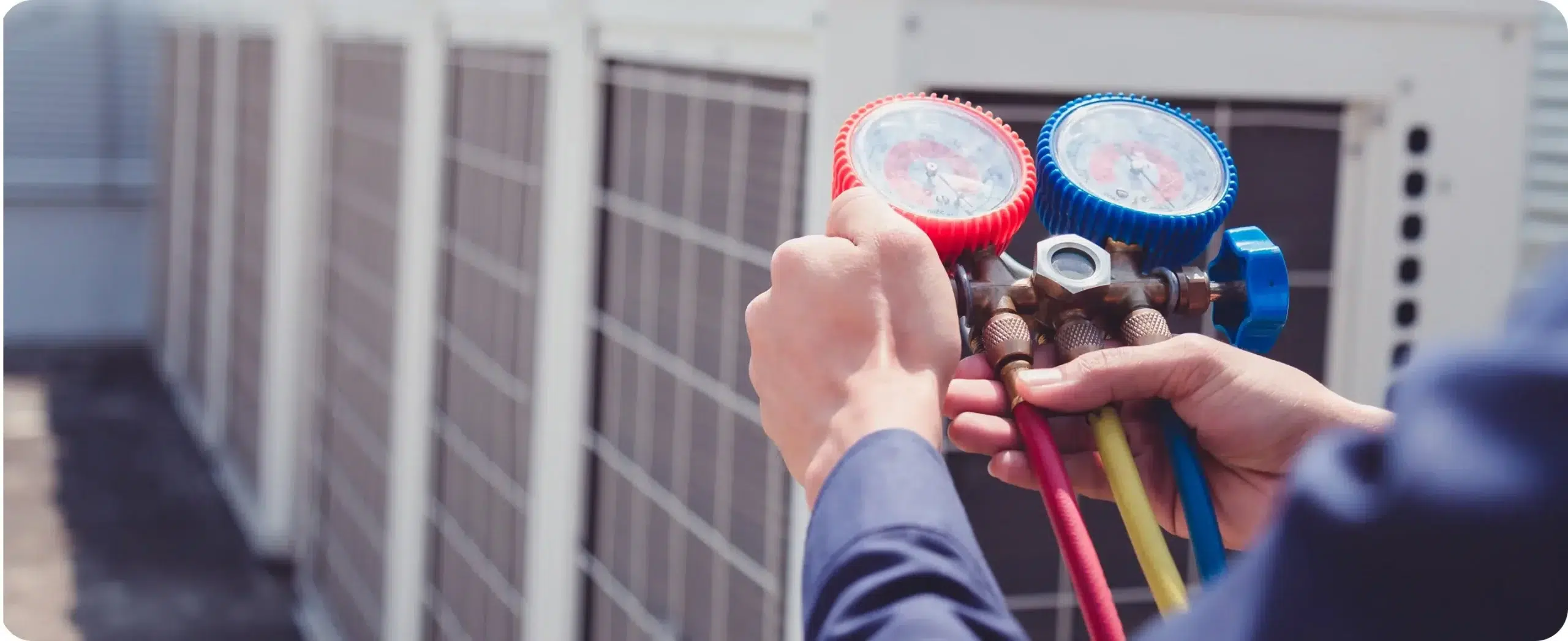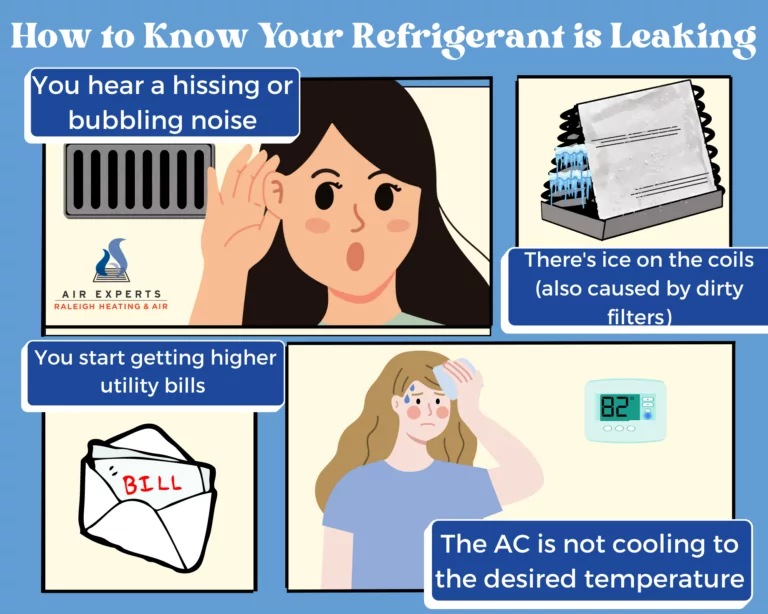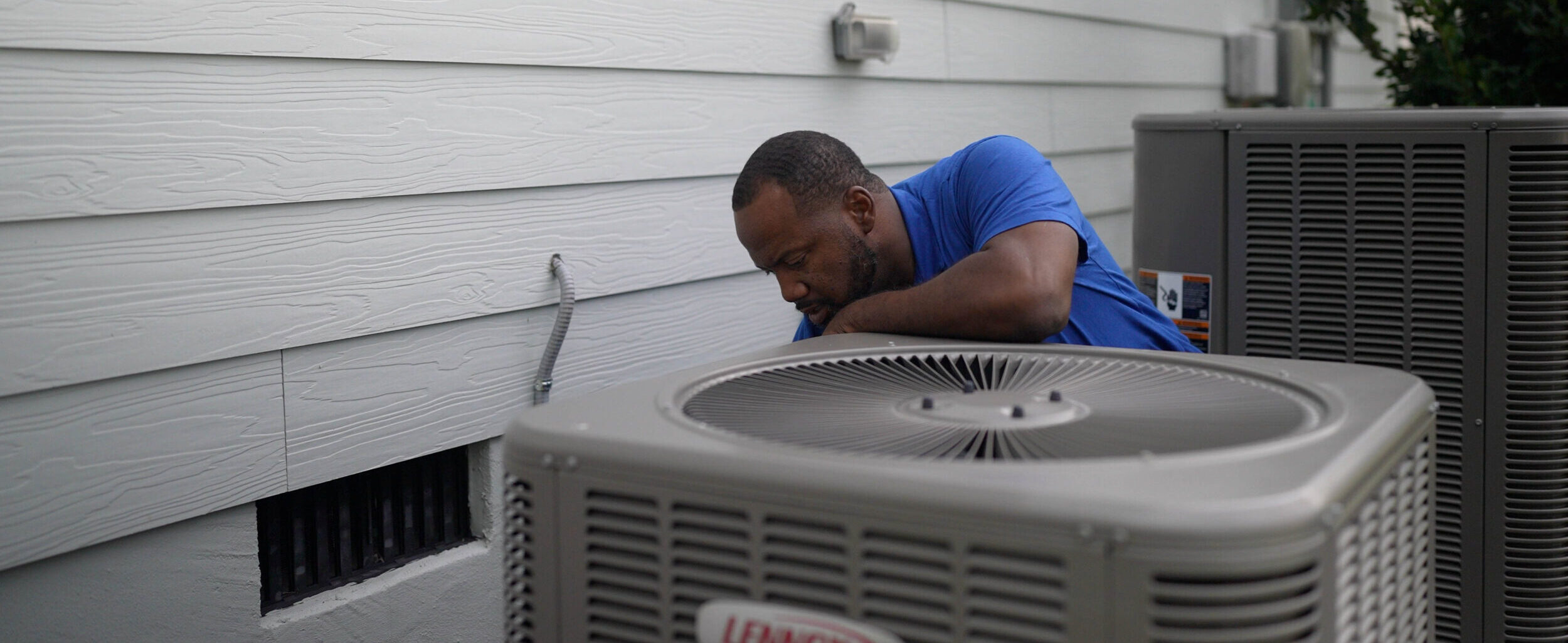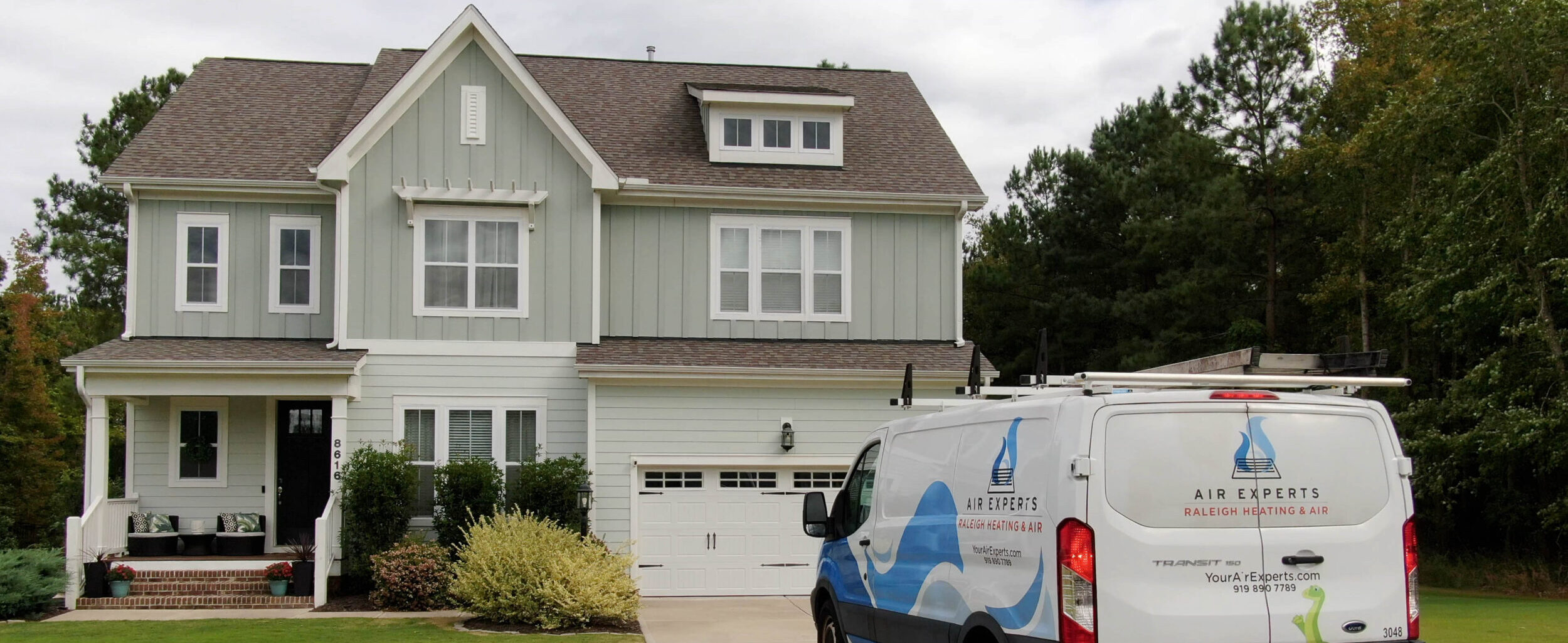Refrigerant Leaks: 5 Signs You Might Have One

Refrigerant leaks are hard to identify because they are invisible. In this article, we will give you some signs that your refrigerant is leaking as well as what to do.
It’s 10 am on a Monday when Nick Howard, one of our service technicians, arrives at a call for an annual AC maintenance check. Nick goes upstairs to check the evaporator coils after saying hi to an excited dog and checking the thermostat. It’s not getting cold inside the house, a prevalent problem we see during the spring when people switch their heating system to AC. After ensuring the evaporator coils are good, Nick goes to the outside AC unit to test the capacitor and check the pressure of the refrigerants.
There’s the problem. The pressure is way too low – indicating low refrigerant and a leak.
How to Tell If You Have a Refrigerant Leak
Any number of scenarios can lead to a leaking coil, here’s what to look out for if you suspect there’s a refrigerant leak in your system.
Some of the signs of a refrigerant leak are:
- Ice on the evaporator coils
- Noisy hissing and bubbling sounds
- Higher than-average bills
- Long cooling cycles (It takes a long time for the AC to cool the area to the desired temperature.)
- Increased humidity in the cooling area

What to Do If You Have a Refrigerant Leak
Get an HVAC technician out to your house as soon as possible. While a refrigerant leak equals low or no cooling for your home, it also means refrigerant is entering the environment. There are two types of refrigerant currently in use in residential systems as of the publishing of this article on 6/26/2023. R-22, which we are phasing out because of its harm to the ozone layer. And R-410A, a less potent greenhouse gas than previous refrigerant options, but still a greenhouse gas nonetheless. After inspecting your HVAC unit, one of our technicians will give you the repair options available.
In most cases, if your HVAC system is older than 2010, a new unit will certainly be more cost-effective overall. HVAC models older than 2010 use R-22, an outdated refrigerant no longer manufactured. Because no one manufactures R-22 due to environmental regulations, its price has increased drastically. If you choose to repair your unit, repairing AND refilling your system with R-22 will cost more than replacement in the long run. If you are worried about your budget, our Ease Comfort Program makes replacing your HVAC system easy and affordable.
If you found this post helpful, check out our other blog posts, subscribe to our YouTube channel, and follow us on social media for more HVAC and plumbing tips, information, and fun!







